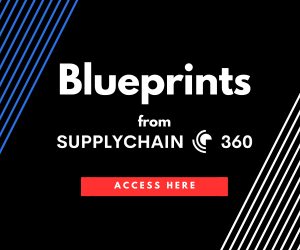
Customer centricity SERIES
Blueprints
As companies navigate through unpredictable market dynamics, the shift towards customer-centric, resilient, and adaptive supply chains has become imperative. This blueprint addresses pressing challenges such as demand volatility, supply disruptions, and the rising expectations of personalized customer experiences. By focusing on these areas, businesses can unlock significant benefits, including enhanced operational efficiency, improved customer satisfaction, and a competitive edge in the marketplace. Embracing these strategies promises not just survival but thriving in the dynamic world of supply chain management.
Step 1: Establish a Foundation for Data Integration
- Assess Current Data Infrastructure: Evaluate existing data collection, storage, and analysis systems. Identify gaps in data infrastructure that need upgrading or integration.
- Develop a Unified Data Platform: Design a centralized data platform that can aggregate data from various sources such as ERP systems, CRM platforms, IoT devices, and third-party data services.
- Ensure Data Quality and Consistency: Implement data cleaning, validation, and standardization protocols to ensure high-quality, reliable data.
Step 2: Implement Advanced Data Analytics Tools
- Select Appropriate Data Analytics Solutions: Choose data analytics tools that align with your supply chain requirements, considering factors such as scalability, ease of use, and integration capabilities.
- Develop Analytical Models: Create predictive and prescriptive models focusing on cost-related metrics like demand forecasting, inventory levels, transportation costs, and supplier performance.
- Train the Team: Provide training and resources to your team on how to use these tools and interpret the insights generated.
Step 3: Integrate IoT and Real-Time Tracking Technologies
- Deploy IoT Devices: Install IoT sensors and RFID tags on products, equipment, and vehicles to collect real-time data on inventory levels, location, condition, and environmental factors.
- Establish Real-Time Monitoring Systems: Set up dashboards and monitoring systems to visualize data from IoT devices in real-time, enabling immediate response to any issues or changes in the supply chain.
Step 4: Enhance Decision-Making with AI and Machine Learning
- Incorporate AI and Machine Learning: Utilize AI and machine learning algorithms to analyze large datasets, identify patterns, and predict future trends and anomalies.
- Automate Decision Processes: Implement AI-driven automation for routine decisions, such as reorder points for inventory or optimal routing for logistics, to optimize costs dynamically.
Step 5: Foster a Data-Driven Culture
- Promote Data Literacy: Conduct workshops and training sessions to enhance the data literacy of your workforce, emphasizing the importance of data-driven decision-making.
- Encourage Collaboration: Foster a collaborative environment where data insights are shared across departments to enable holistic optimization strategies.
- Reward Innovation: Implement incentive programs that reward innovative ideas and solutions derived from data analysis, encouraging continuous improvement.
Step 6: Establish Robust Data Security Measures
- Implement Data Security Protocols: Ensure robust security measures are in place to protect sensitive data, including encryption, access controls, and regular security audits.
- Comply with Regulations: Stay compliant with data protection regulations relevant to your industry and regions of operation to avoid legal and financial penalties.
Step 7: Continuous Monitoring and Optimization
- Set Up Real-Time Alerts: Configure alerts for key metrics that indicate potential cost issues, allowing for immediate action to prevent losses.
- Regularly Review Analytical Models: Periodically assess and update your analytical models to reflect changes in the supply chain environment and business objectives.
- Adopt a Continuous Improvement Mindset: Encourage ongoing evaluation of the data analysis process and make adjustments as needed to improve cost optimization strategies.
Step 8: Leverage Insights for Strategic Decision-Making
- Integrate Insights into Strategic Planning: Use the insights gained from real-time data analysis to inform higher-level strategic decisions, such as supply chain redesign, sourcing strategies, and investment in new technologies.
- Collaborate with Partners: Share relevant data insights with suppliers, logistics providers, and other partners to align strategies and optimize costs across the entire supply chain.
Step 9: Measure Impact and Refine Processes
- Develop KPIs for Cost Optimization: Establish clear key performance indicators (KPIs) related to cost savings, efficiency improvements, and service level enhancements.
- Monitor and Report on Performance: Regularly track these KPIs and report on the impact of real-time data analysis on supply chain costs.
- Iterate and Improve: Use these insights to refine your strategies, models, and processes continually for sustained cost optimization.
By following these detailed steps, organizations can effectively integrate real-time data analysis into their supply chain operations, leading to dynamic cost optimization and enhanced decision-making capabilities. This strategic approach not only reduces costs but also improves agility, resilience, and customer satisfaction in today’s competitive and ever-changing market environment.
Integrating real-time data analysis into supply chain operations requires a suite of advanced tools and technologies. These components play a crucial role in collecting, analyzing, and acting upon data to achieve dynamic cost optimization.
IoT Devices and Sensors
IoT devices, including sensors and RFID tags, are pivotal for capturing real-time data from various points in the supply chain, such as warehouses, transportation vehicles, and products themselves. They provide valuable insights into inventory levels, location tracking, environmental conditions, and product handling quality. The integration of IoT devices enables proactive management of the supply chain by identifying potential issues before they escalate, thereby enhancing efficiency and reducing costs.
Data Analytics Platforms
Advanced data analytics platforms are essential for processing and analyzing the vast amounts of data generated by IoT devices and other sources. These platforms offer features like predictive analytics, which forecast future trends and demand, and prescriptive analytics, which suggest optimal decisions based on data analysis. By leveraging these platforms, supply chain managers can make informed decisions that align with cost optimization goals and respond swiftly to market changes.
AI and Machine Learning Algorithms
AI and machine learning algorithms are at the heart of dynamic cost optimization. They analyze patterns and correlations within large datasets to predict outcomes and automate decision-making processes. For example, machine learning can optimize inventory levels based on predicted demand, thereby reducing carrying costs and minimizing stockouts or overstock situations.
Cloud Computing
Cloud computing provides the infrastructure to store and manage the vast amounts of data collected. It offers scalability, flexibility, and accessibility, allowing stakeholders to access real-time data and insights from anywhere, at any time. Cloud platforms facilitate the seamless integration of various tools and technologies, ensuring that data flows smoothly across the supply chain ecosystem.
Collaboration and Visibility Platforms
These platforms enhance transparency and collaboration across the supply chain, providing stakeholders with a unified view of operations. They integrate data from multiple sources, offering real-time visibility into inventory, shipments, and supplier performance. This integration is crucial for coordinating actions, optimizing logistics, and ensuring that all parts of the supply chain are aligned with cost optimization objectives.
By harnessing these tools and technologies, companies can build a data-driven supply chain that is not only more responsive and efficient but also capable of dynamic cost optimization, ensuring competitiveness in a rapidly evolving market landscape.
To gauge the effectiveness of customer-centric supply chain transformations, supply chain directors should focus on a set of critical metrics and KPIs that offer insights into performance, efficiency, and customer satisfaction. Here is an overview of essential metrics and guidance on tracking and interpreting them:
1. Order Fulfillment Cycle Time
- Definition: The total time taken from customer order receipt to delivery.
- Tracking: Leverage supply chain management software to track each stage of the order fulfillment process.
- Interpretation: Shorter cycle times indicate efficient processes and high responsiveness to customer needs, enhancing satisfaction.
2. Inventory Turnover Ratio
- Definition: The number of times inventory is sold and replaced over a specific period.
- Tracking: Calculate by dividing the cost of goods sold by the average inventory value.
- Interpretation: Higher turnover rates suggest effective inventory management and alignment with market demand, reducing holding costs.
3. On-Time Delivery Rate
- Definition: The percentage of orders delivered on or before the promised delivery date.
- Tracking: Monitor delivery schedules and actual delivery times through logistics and transportation management systems.
- Interpretation: High on-time delivery rates reflect reliability and effectiveness in meeting customer expectations.
4. Customer Order Accuracy
- Definition: The accuracy of fulfilling customer orders as per their specifications.
- Tracking: Assess the match between customer orders and the items shipped and delivered.
- Interpretation: High accuracy rates indicate efficient order processing and inventory management, leading to higher customer satisfaction.
5. Supply Chain Cost as a Percentage of Sales
- Definition: The total cost of supply chain operations divided by total sales, expressed as a percentage.
- Tracking: Aggregate supply chain costs, including procurement, production, warehousing, and distribution, and compare against sales data.
- Interpretation: Lower percentages denote cost efficiency in the supply chain, contributing to improved profitability without compromising service quality.
Focusing on these KPIs enables supply chain directors to obtain a holistic view of their operations, identifying areas of excellence and opportunities for improvement. Regular monitoring and analysis of these metrics are vital for sustaining supply chain agility, efficiency, and customer-centricity in a dynamic market environment.
Embracing a customer-centric, resilient, and adaptive approach is not just advantageous—it’s essential. This blueprint serves as a foundational guide to transforming your supply chain operations, ensuring they are agile, responsive, and aligned with the ever-evolving demands of your customers.
For our FAQs to implementing A Customer-Centric Supply Chain Transformation click here.
By subscribing to SupplyChain360, you’ll gain access to an exclusive collection of cutting-edge research, blueprints, news and more, all designed to keep you at the forefront of supply chain innovation.








